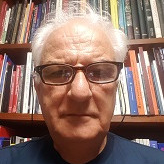Quantum Processes in Living Systems
A special issue of Entropy (ISSN 1099-4300). This special issue belongs to the section "Quantum Information".
Deadline for manuscript submissions: closed (31 March 2024) | Viewed by 12217
Special Issue Editors
Interests: quantum-classical hybrid systems; non-Hermitian quantum mechanics; non-Hamiltonian systems; open quantum systems; quantum-biology
Special Issues, Collections and Topics in MDPI journals
Interests: quantum electrodynamics; open systems; time dependent spin Hamiltonians; quantum and semiclassical Rabi models
Special Issues, Collections and Topics in MDPI journals
Special Issue Information
Dear Colleagues,
In recent years, experiments on energy transport in photosynthetic systems have revived the idea that quantum mechanics plays a fundamental role in living systems. This idea is almost as old as quantum mechanics—none other than Pascual Jordan and Erwin Schrödinger were the first to propose it. Phenomena such as quantum tunneling, exciton coherent propagation, resonances of molecular vibrations, entanglement as a tool for weak signals perception, quantum stability and modification of DNA, and even the ambitious project of unveiling the mysteries of the mind’s working are all applications of quantum mechanics that appear nowadays in scientific literature. Are these quantum phenomena really necessary for life? What are the other ingredients that are missing for a true understanding of life?
This Special Issue’s goal is to be a milestone for our current understanding of what life is from the point of view of quantum mechanics. Not only we are looking for contributions that review or give different interpretations of the already known quantum effects, but we welcome proposals of novel statistical mechanisms. Moreover, we will appreciate both experimental and theoretical papers as long as they contribute to discussing their results within the wider perspective of assessing the quantum nature of life processes.
Prof. Dr. Alessandro Sergi
Prof. Dr. Antonino Messina
Guest Editors
Manuscript Submission Information
Manuscripts should be submitted online at www.mdpi.com by registering and logging in to this website. Once you are registered, click here to go to the submission form. Manuscripts can be submitted until the deadline. All submissions that pass pre-check are peer-reviewed. Accepted papers will be published continuously in the journal (as soon as accepted) and will be listed together on the special issue website. Research articles, review articles as well as short communications are invited. For planned papers, a title and short abstract (about 100 words) can be sent to the Editorial Office for announcement on this website.
Submitted manuscripts should not have been published previously, nor be under consideration for publication elsewhere (except conference proceedings papers). All manuscripts are thoroughly refereed through a single-blind peer-review process. A guide for authors and other relevant information for submission of manuscripts is available on the Instructions for Authors page. Entropy is an international peer-reviewed open access monthly journal published by MDPI.
Please visit the Instructions for Authors page before submitting a manuscript. The Article Processing Charge (APC) for publication in this open access journal is 2600 CHF (Swiss Francs). Submitted papers should be well formatted and use good English. Authors may use MDPI's English editing service prior to publication or during author revisions.







